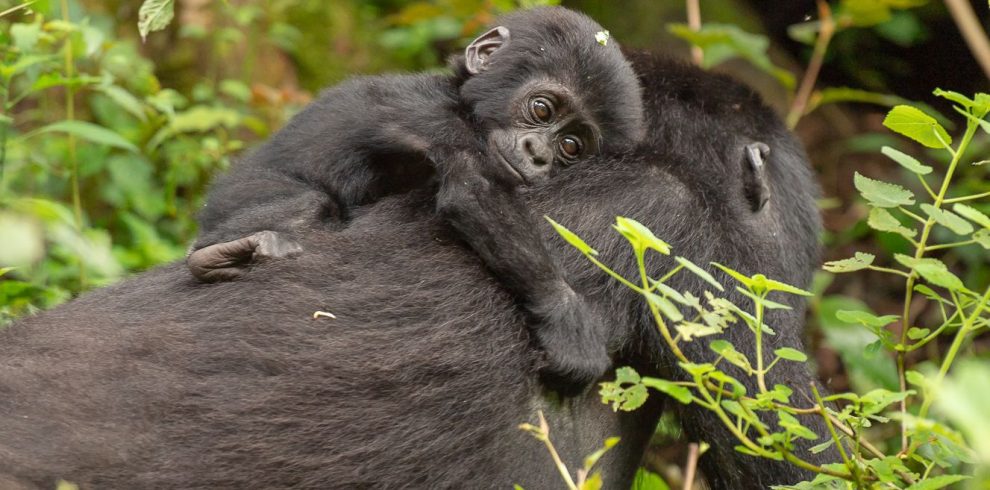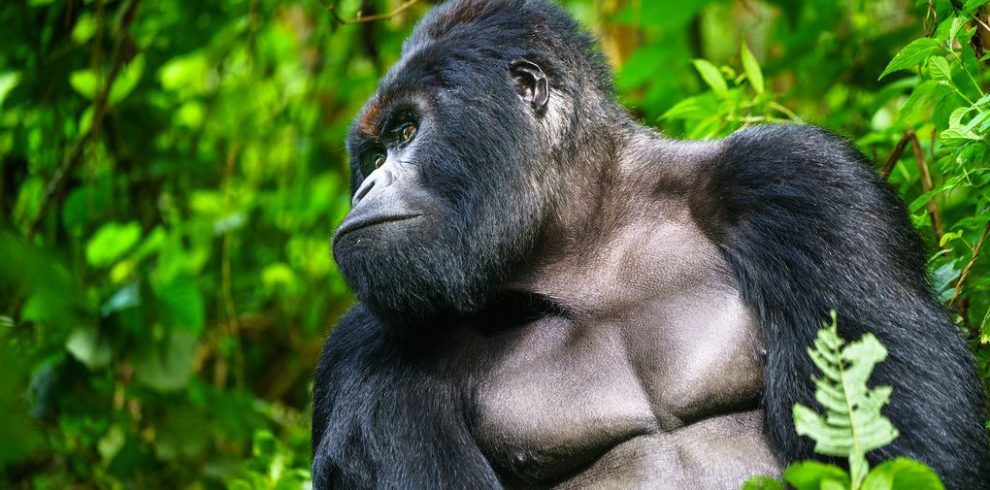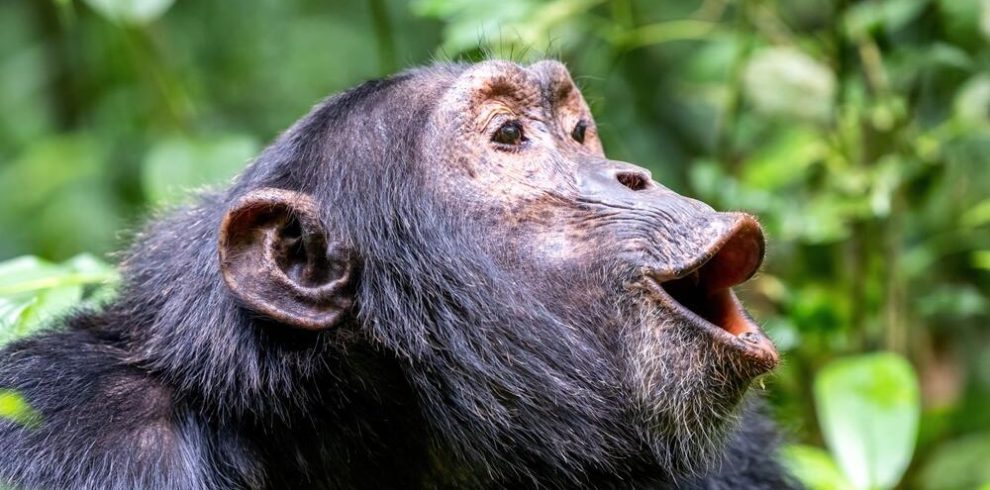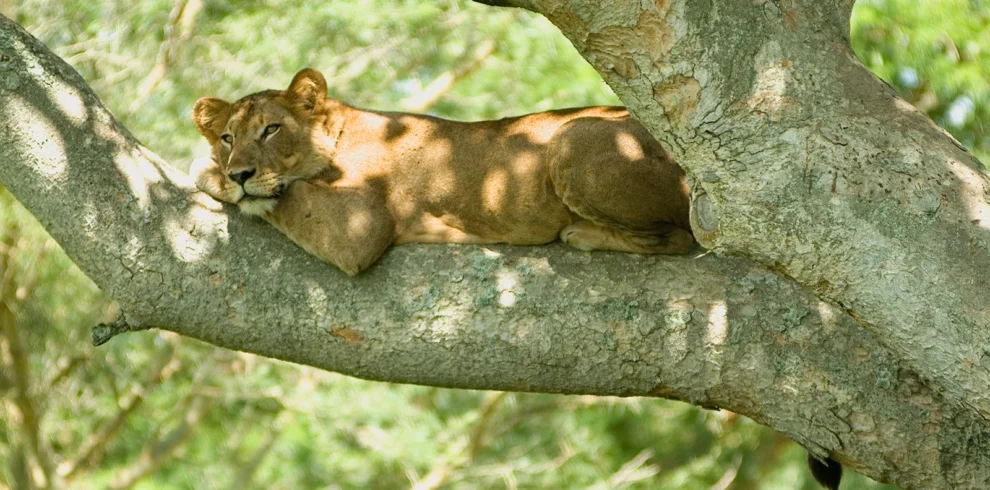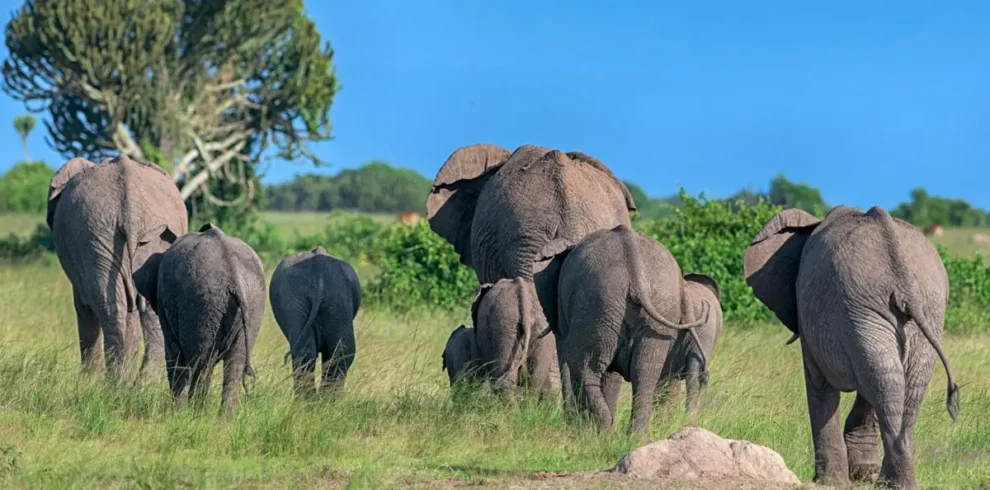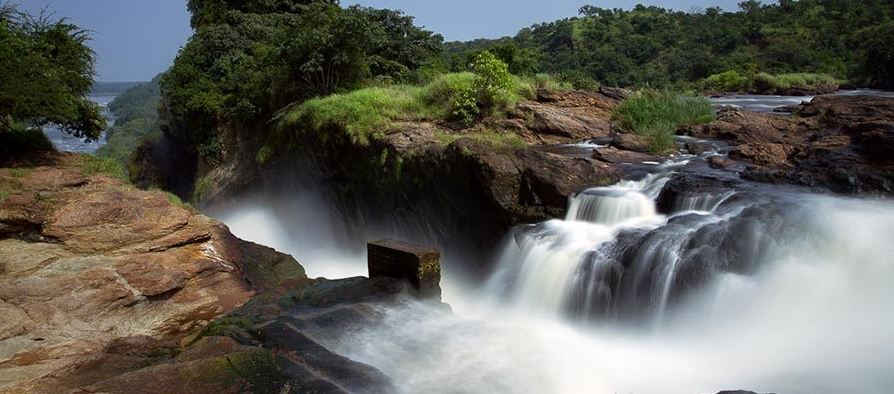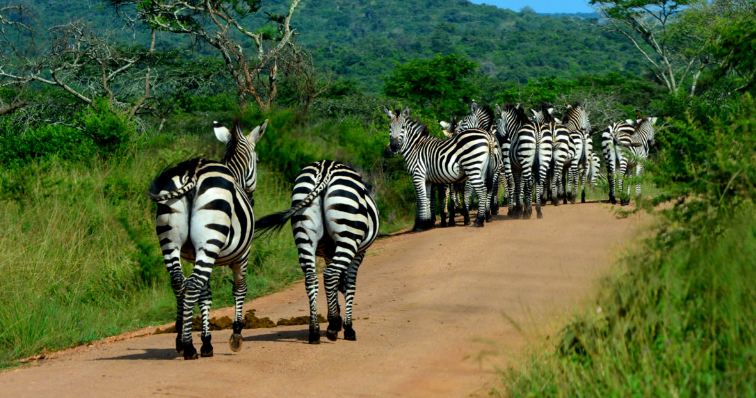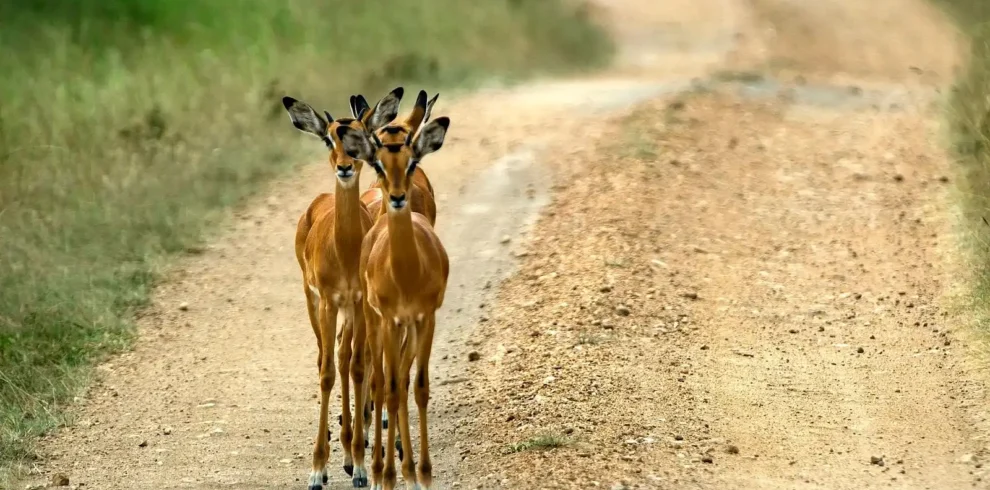How many national parks are there in Uganda?
Uganda has a total of 10 beautiful national park – special natural areas taken under protection by the authorities of the country. Each of the 10 Uganda National Parks is unique and remarkable in its way – offering something special that is not found in the other. You can click the links below for the detailed guides to all national parks in Uganda;
How to Get permits for Uganda National Parks
You can simply purchase your Uganda National Park entrance permits on arrival at the park entrance gate. Payments are done by credit card only but it is recommended to bring some cash (Uganda shillings or US Dollars) in case the reservation system of the Uganda Wildlife Authority (UWA) is down.
When you go mountain gorilla trekking or chimpanzee tracking in Bwindi Impenetrable Forest or Kibale Forest National Park, the park entry fee is included in your trekking permit.
You may also like; the best places to visit in Uganda
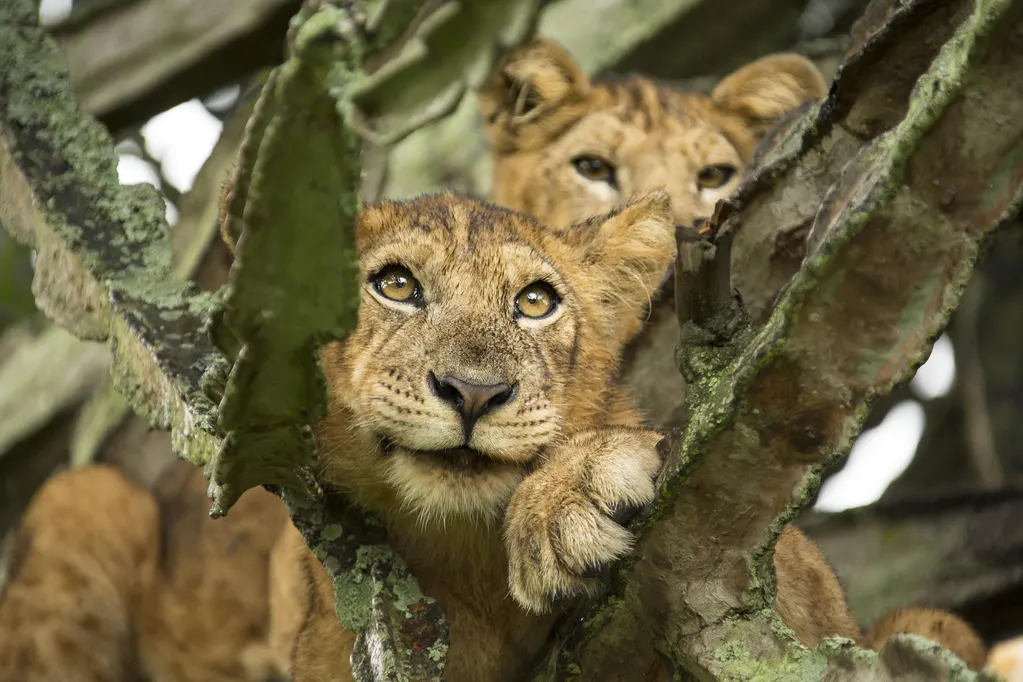
How much are the park fees in Uganda?
The tariffs charged by the Uganda Wildlife Authority (UWA) are listed below. The Uganda National Parks entrance fees are valid for 24 hours.
Murchison Falls National Park
- USD 45 for non-residents
- USD 35 for foreign residents
- UGX 25,000 for East African Citizens
- USD 30 for Rest of African citizens
- UGX 3000 for Ugandan Pupils and/or Students (Groups)
- Children aged 0-5 can enter free of charge
- Children aged 5-15 years is USD 25 for foreign non-residents, USD 15 for foreign residents, UGX 10,000 for East African citizens and USD 10 for Rest of Africa
- UGX 5000 for Tertiary Institutions/Universities students
Queen Elizabeth, Kibale, Lake Mburo, Bwindi, Mgahinga, and Kidepo National Parks
- USD 40 for non-residents
- USD 30 for foreign residents
- UGX 20,000 for East African Citizens
- USD 25 for Rest of African citizens
- UGX 3000 for Ugandan Pupils and/or Students (Groups)
- Children aged 0-5 can enter free of charge
- Children aged 5-15 years is USD 20 for foreign non-residents, USD 10 for foreign residents, UGX 5000 for East African citizens and USD 5 for Rest of Africa
- UGX 5000 for Tertiary Institutions/Universities students
- UGX 2000 Uganda Wild-life Clubs
Mount Elgon, Rwenzori Mountains, Semuliki
- USD 35 for non-residents
- USD 25 for foreign residents
- UGX 15,000 for East African Citizens
- USD 20 for Rest of African citizens
- UGX 1500 for Ugandan Pupils and/or Students (Groups)
- Children aged 0-5 can enter free of charge
- Children aged 5-15 years is USD 5 for foreign non-residents, USD 5 for foreign residents, UGX 2500 for East African citizens and USD 10 for Rest of Africa.
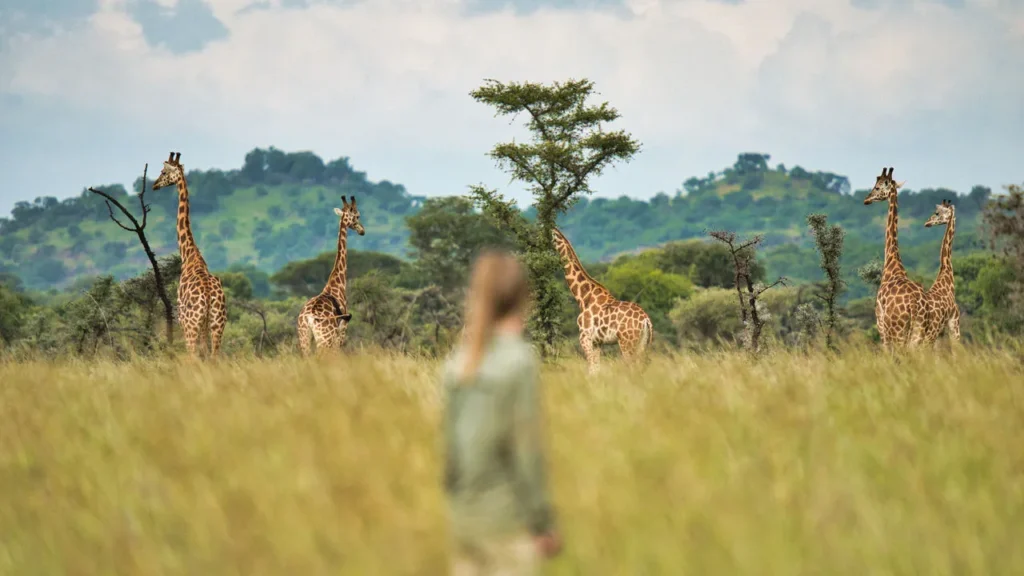
Uganda National Parks Vehicle Entrance Fees
- Vehicle entrance fee: UGX 30,000
- Please note that the vehicle entrance fees are per entry, not per 24 hours
Uganda National Parks Camping Fees
- The Ugandan Wildlife Authority (UWA) manages the public campgrounds inside the National Parks.
- It costs only Uganda Shillings 40000 per person, per night to stay overnight at a UWA public campsite with pit latrine/firewood/rubbish pit/water/fireplace/thatched shelter with security inclusive.
- Wilderness camping in Murchison Falls National Park costs USD 40 / per person per night and includes a night warden and firewood.
Costs of gorilla trekking & other park activities
Uganda is possibly the best destination in the world to go for primate trekking adventures.
You can go on a mountain gorilla and chimpanzee trekking tour, or join a team of experts researching habituated mountain gorillas, golden monkeys, and chimpanzees.
Tulambule Uganda Safaris can arrange your chimpanzee and gorilla trekking permits or habituation experience for you when you confirm your tour booking with us. For this service, we charge a handling fee of USD 25 per chimp permit and USD 30 per gorilla permit.
You can read more about Uganda gorilla permits price and booking information, here.
Another thrilling experience is undertaking a guided nature walk. Chances are low that you will encounter big predators (and perhaps that’s even a relief…) but it is a nice variation to the car-based safari experience, and you can learn a lot from the Uganda Wildlife Authority ranger
To get a complete overview of all safari experiences available in Uganda National Parks, refer to the Uganda Wildlife Authority tariff sheet.

Uganda National Parks activities and fees
Bwindi Impenetrable Forest
Park entrance fee is included in the activity price
- Gorilla trekking; USD 800 for foreign non-residents; USD 700 for foreign residents; UGX 300000 for East African Citizens; USD 500 Rest of Africa
- Gorilla Habituation Experience; USD 1500 for foreign non-residents; USD 1000 for foreign residents; UGX 750,000 for East African Citizens; USD 1000 for Rest of Africa
- Batwa Forest Experience; USD 40 for foreign non-resident; USD 40 for foreign residents; UGX 40000 for East African Citizens
Mgahinga Gorilla National Park
Park entrance fee is included in the activity price
- Gorilla trekking; USD 800 for foreign non-residents; USD 700 for foreign residents; UGX 300000 for East African Citizens; USD 500 Rest of Africa
- Golden monkey tracking; USD 60 for foreign non-resident; USD 50 for foreign resident; UGX 40,000 for East African Citizen
- Batwa Forest Experience; USD 80 for foreign non-resident; USD 70 for foreign resident; UGX 50000 for East African Citizen
- Volcano Climbing; USD 100 for foreign non-resident; USD 80 for foreign resident; UGX 50000 for East African Citizen
Kibale National Park
- Chimpanzee tracking; USD 250 for foreign non-residents; USD 200 for foreign residents; UGX 180000 for East African Citizens
- Chimpanzee Habituation Experience; USD 300 for foreign non-residents; USD 250 for foreign residents; UGX 250,000 for East African Citizen
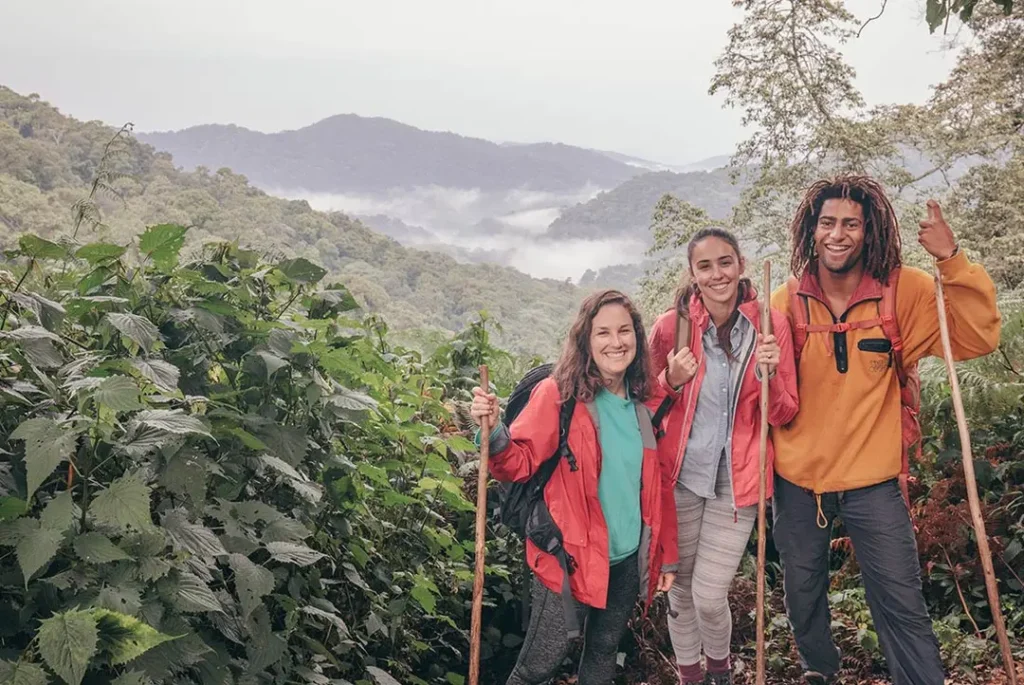
Uganda National Parks Rules
All national parks in Uganda have rules that both the visitors and the guides must follow. The rules and regulations are set to protect the natural environment – plants and animals, as well as natural resources, around which the entire ecosystem is built. Some rules are designed to ensure the safety of the tourist.
- Do not camp or make campfires except at designated sites
- You should not drive off the tracks.
- Avoid disturbing wildlife by sounding motor horns.
- Do not bring dogs or other pets into the park.
- Do not litter in the park
- Do not bring firearms or ammunition into the park.
- Do not pick flowers or destroy any vegetation.
- Do not exceed the speed limit of 40km per hour (25mph)
- Retain all official receipts for verification
- Park gates open between 7am to 7pm

